cultivator the
SPECIAL EDITION – SPRING 2023
We open this special edition by sharing a summary of how Albert Lea Seed started, written in 1986 by the late Lou Ehrhardt, founder of the company and grandfather of current company president Mac Ehrhardt (edited for space and clarity).

My father-in-law, Clarence Wedge, founder of Wedge Nursery, started a small seed business in downtown Albert Lea around 1913. In 1917, he asked his son, Ralph, to manage it. But when Ralph got drafted during WWI, they had to close the seed business down.
After the war, Ralph and a fellow named Paul Petran started it back up. They were in Gulbrandson Implement Building [now Wells Fargo Bank’s parking lot]. I worked for them during the spring of 1923 at a salary $125 a month. I liked the work, but in June they didn't need me so I went on the road selling nursery stock on commission for Wedge Nursery. Ralph and Paul had operated for two or three years and really weren't making any money. Paul got out, taking over a small seed tree seed operation, and Ralph kept the seed business.
In August 1923, Ralph suggested I buy the retail part of the business, and he would retain the wholesale side

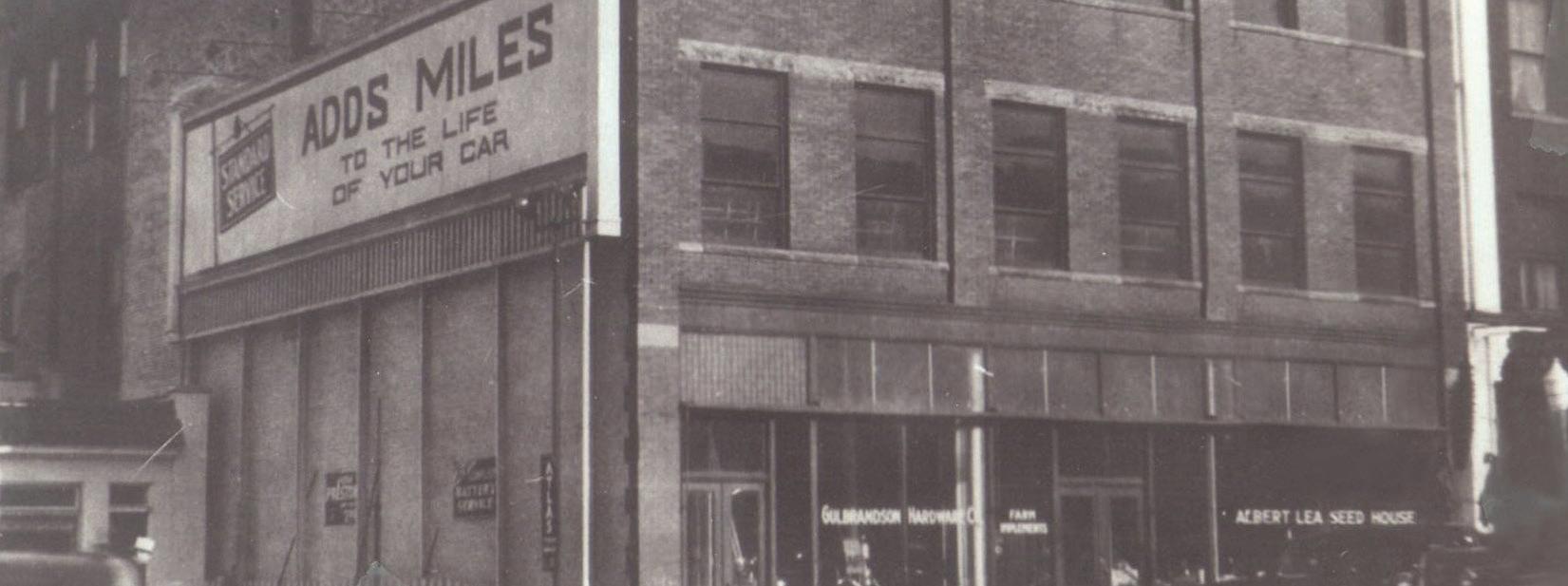
and the clipper cleaning machine. He wanted $1000 for the good will and had about $2,000 in inventory.
My son, George, joined me in the Seed House around 1947. In about 1950, the highway department abandoned Stevens Street as Highway 65 to Minneapolis and built the present highway, leaving our location at the time on a back road with no access to the present highway. We bought a lot on Fenton Avenue and built there [now Eastside Laundry]. We operated our sales from there and used the old Seed House as a cleaning plant and warehouse. After a few years, the present service road was put in, so we built the General Trading Building [now Floor Tech] and moved over there. We had our sales in the new building and continued to use the old seed house right behind it [no longer there] for warehousing and cleaning.
We only grew hybrid seed corn for a few years. We were growing Minnesota numbers developed by the U of MN, but they were a little early and didn't yield up so we discontinued processing seed corn. We got into a pretty good corn business by selling some Iowa numbers at $6 a bushel, with 1 bushel free with 10.
Top: Our first location in Gulbrandson Hardware Left: George and Lou Ehrhardt mixing seed (circa 1950) Above: The check Lou used to purchase the business
1
THANK YOU FOR YOUR BUSINESS!
This year marks our 100th year in the seed business. As we reflect on the busy year we just had, we want to take a moment to express gratitude to our employees, loyal customers, and the many stakeholders and folks long gone who have contributed so much to our 100 years of success.

Farmers, working with you every day allows us to be directly involved in the vibrant growth of diversified agriculture. We know you count on us to provide quality seed and agronomic information to help you farm successfully while stewarding the land—a responsibility we don’t take lightly.
As you read on the previous page, our grandfather, Lou Ehrhardt, started selling seed out of Gulbrandson Hardware in downtown Albert Lea in 1923. He sold Grimm alfalfa, Hubam sweetclover, Danish Sludstrup mangel beets, Marquis wheat, sudangrass, flax, peas, oats, Dwarf Essex rapeseed, MN13 open-pollinated field corn, and a relatively new forage crop called Habaro Soybeans: “…many farmers are planting them with corn for fodder, ensilage, and hogging-off.” He also sold fruit in season, goldfish, and hardware items. As you can see
from that product list, we’ve been supporting diversified agriculture from the beginning and have never stopped. Today, we have over 600 seed products in our lineup, maintaining the most varied inventory of farm and field seed in North America. We believe this range and variety of seed choices provides the strongest lineup of both organic and non-GMO conventional seed products, anywhere. Every season we expand our Viking Conventional Corn & Soybean brand to provide the best non-GMO varieties and hybrids (including Viking 72-06, which won many trials in the Upper Midwest in 2022). We have also continued to grow our research and testing capabilities over many years.
Our small grain, hay seed, and cover crop offerings are always interesting, as we include some of the very newest (as well as some heirloom) oat, wheat, barley and rye varieties. We’re convinced that there is a place in your operation for winteror spring-sowed small grains that can increase the health of your soils and your bottom line.
As many of you know, we acquired Blue River Organic Seed in 2022. We brought on most of
MAC EHRHARDT, PRESIDENT OF ALBERT LEA SEED | TOM EHRHARDT, VICE PRESIDENT OF ALBERT LEA SEED
2
their staff and retained their office and warehouse location in Ames, IA. We believe we are now even more uniquely positioned to provide the best organic-specific seed genetics for corn, soybeans, alfalfa and other crops—including favored access to the largest corn breeding program focused on developing hybrids specifically for organic acres.
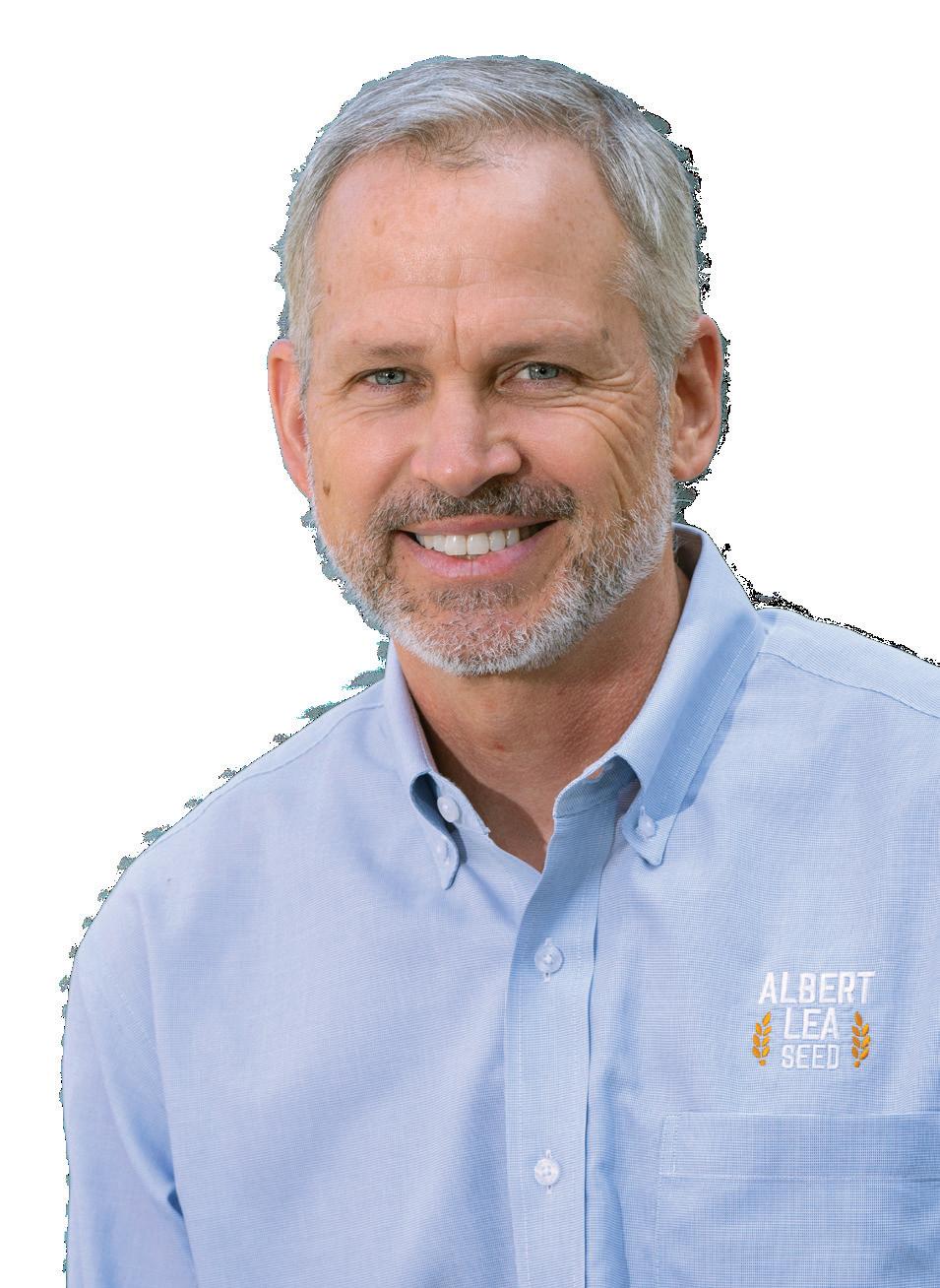

We want to state clearly that the acquisition of Blue River does not diminish our support for customers who farm conventionally. Our combined companies have improved access to genetics and resources that also benefit any conventional farm operation.
We’ve grown a lot in the past 100 years, but we are still a small company—owned by the same family and run by the good people who work here every day. Our core values include building goodwill with everyone in the agricultural community, being transparent in our business practices, providing practical solutions to the challenges facing our customers, and supporting the agricultural landscape that supports us all. We are committed to the many ways good farming practices (both organic and conventional) can, at the most basic level, improve long term soil and water quality while reducing greenhouse gases. Thank you for helping us reach this incredible milestone. We look forward to working with you and your families for the next century and beyond!
We’ve grown a lot in the past 100 years, but we are still a small company—owned by the same family and the good people who work here every day. Our core values include building goodwill with everyone in the agricultural community, being transparent in our business practices, providing practical solutions to the challenges facing our customers, and supporting the agricultural landscape that supports us all.
3
A LEGACY
We’re incredibly grateful for everyone who has contributed to the success of our business over the past 100 years. Contributing to your success in return is our legacy.




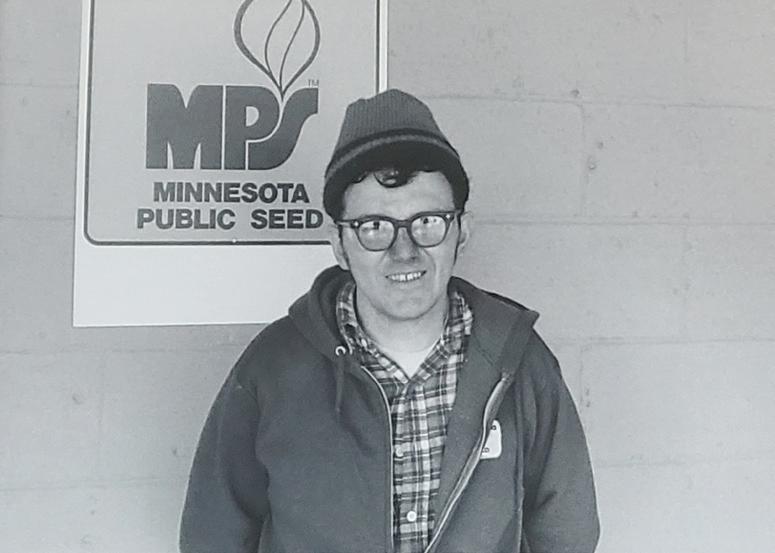
 Salvador Telles, Oscar Adams, and Duane Citurs; seed plant workers
Dennis Whelan, George’s favorite handyman & builder
Tom Sheehan, Schoolteacher and part-time helper with Oscar Adams, long-time Seed Plant Manager
David Kluender, Farmer & (Bricelyn,Customer MN)
Gerald Stencel, Farmer & Customer (Waseca, MN)
Salvador Telles, Oscar Adams, and Duane Citurs; seed plant workers
Dennis Whelan, George’s favorite handyman & builder
Tom Sheehan, Schoolteacher and part-time helper with Oscar Adams, long-time Seed Plant Manager
David Kluender, Farmer & (Bricelyn,Customer MN)
Gerald Stencel, Farmer & Customer (Waseca, MN)
4
Harlan Peterson, Farmer & Customer (Albert Lea, MN)
CAPTURED
On these pages, we tip our hats to some past customers and employees whose photos we came across while producing this newsletter. See anyone you know? Say hello for us!





 Matt Leavitt, Organic Lead and Agronomist
Roger Elliott, Sales Agronomist
Kathleen English, Utility Infielder
Martin Broitzman, Farmer & Customer (Northwood, IA)
Michael Coughlin, Farmer & Customer (Blooming Prairie, MN)
Matt Leavitt, Organic Lead and Agronomist
Roger Elliott, Sales Agronomist
Kathleen English, Utility Infielder
Martin Broitzman, Farmer & Customer (Northwood, IA)
Michael Coughlin, Farmer & Customer (Blooming Prairie, MN)
5
Kenneth Corson, Farmer & Customer (Austin, MN)
WHAT’S HAPPENING
AT ALBERT LEA SEED?
MAC EHRHARDT | PRESIDENT OF ALBERT LEA SEED
It’s been a long time since we’ve put out a printed newsletter, and we have a lot talk about!
Our acquisition of Blue River Organic Seed last summer has meant a great deal of work for everyone in both organizations, and more Zoom meetings than anyone should have to endure. Our work is not done, but we have accomplished a lot. And I’d like to publicly thank the entire staff of Blue River, Viking, and Albert Lea Seed for putting their collective shoulders to the wheel. I’d also like to thank you, our customers and dealers, for being patient with us as we worked through the integration and as we work through the complex logistics of this shipping season.
I know we are not getting everything perfect, but I’d like to assure you that we are continuously working to improve our products, processes, and customer service. I will also guarantee that when we make a mistake, we will own it and make it right with you. We take customer feedback seriously, so please let us know how we are doing.
I hope that by the time you read this, corn and soybean planters will have been rolling from NE to NY. But, as I write this, a blizzard is dumping another foot of snow over parts of the Dakotas; Iowa and Ohio report less than 3% of the oats planted; and there has been exactly one day suitable for fieldwork in New York State (according to NASS).
WHAT’S NEXT
We have already shipped more seed around the country to date this year than during the same time period in any prior year, and we have just as many shipments and customer pickups still in front of us.

But even as we do this, we continue to develop the business. Our goal is to be the best supplier of organic and non-GMO field seed in the country. We know our customers and dealers want great products, backed by good information and customer service, from a company that is easy to work with. So in all the work we do we ask the framing question: How does this help our customers and dealers?
PRODUCT DEVELOPMENT
This winter in Chile we began crossing some of the Blue River (FBN) corn germplasm to inbreds from other breeding programs and we also continued the development of new PuraMaize inbreds. We’ll continue that work this summer as we leverage our licensing and germplasm agreements in order to breed corn specifically for the needs of both organic farmers and those looking for the best non-GMO hybrids.
6
PRODUCT TESTING
Jake Hansen, Product Manager, has expanded our replicated corn and soybean testing program to include corn from 78 – 116 day, and soybeans from 0.5 – 5.5 in testing sites from North Dakota to New York and from Kansas to Maryland. It’s the first year of this expanded testing program, and it will, no doubt, be a learning experience. We expect to identify many new corn hybrids and soybean varieties for future release, not to mention learning a lot more about the performance of our current hybrids and varieties. Jake has also entered many of our key hybrids and varieties in FIRST & University Trials around the country.

NEW PRODUCTS FOR 2023-2024
Expect a simplified lineup of organic corn and soybeans for 2024. Our goal is to stick with the best varieties, and stock more inventory. Even so, we are growing some exciting new varieties and hybrids this summer, including a couple SilageMaster hybrids that will result in a noticeable increase in milk/acre production.
ORGANIZATIONAL DEVELOPMENT
After the spring shipping season, we will continue our work on organizational design, process development, and implementing software solutions that will better meet the needs of our organization, our dealers, and our customers.
Thank you for your business, and we sincerely hope you have a safe and prosperous year!
I know we are not getting everything perfect, but I’d like to assure you that we are continuously working to improve our products, processes, and customer service. I will also guarantee that when we make a mistake, we will own it and make it right with you. We take customer feedback seriously, so please let us know how we are doing.
7
ALBERT LEA SEED WELCOMES NATIONAL SALES MANAGER
Early in life I knew I wanted to be in agriculture,” said Herb Hasenkamp, who joined Albert Lea Seed as National Sales Manager last May. “When I was young, I had a small-scale ‘farm’ in our backyard with toy tractors and equipment.”

As Herb grew up, that early fascination with agriculture translated into a wealth of practical experience farming with his family in West Point, Nebraska. They farmed conventionally before switching to organic production in 1994. After graduating high school, Herb attended the University of Nebraska—Lincoln, where he earned a Bachelor of Science in Agronomy. He now runs the family farm along with his wife of 23 years, Karina, and their three sons: Kaleb (20), Landon (17), and Nolan (12).
Herb comes to Albert Lea Seed with decades of experience in seed sales. He previously served as seed director for a Nebraska-based cooperative, where he managed a sales team selling multiple brands. Before that he served at a large seed licensing manufacturer and worked with companies throughout the Midwest.
“I’m excited to be working with both dealers and growers,” he said, adding that he hopes to grow the business and to help both dealers and growers be successful. “There are so many great people in agriculture, and we have a great team at Albert Lea Seed that is always willing to pitch in and get things done.”
Herb acknowledges that there are some significant challenges ahead in agriculture. “Volatility seems to be a big challenge today, as the world keeps getting smaller with advances in technology,” he said. “And as we’ve seen recently, global demand and transportation can greatly influence our markets here in the US, which makes crop planning more difficult as growers try to make the best decisions for their operations.”
But Herb is also hopeful for the future. “Agriculture will always be the foundation of a reliable and healthy food source, which is so critically important,” he said. “Growers are naturally innovative, and I love to watch how they adapt to challenges in front of them.”
RANDY HARMDIERKS | CREATIVE CONTENT MANAGER FOR ALBERT LEA SEED
8
CORN BUILDER CC12: A NEW OPTION FOR UNDERSEEDING
THERESA PEDRETTI | COVER CROP SALES AGRONOMIST FOR ALBERT LEA SEED

Looking for a new underseeding option? Check out our Corn Builder CC12 cover crop mix:
PRODUCT DETAILS
• Designed for seeding with spring-seeded small grains
• Three-way legume mix has excellent N-fixing potential
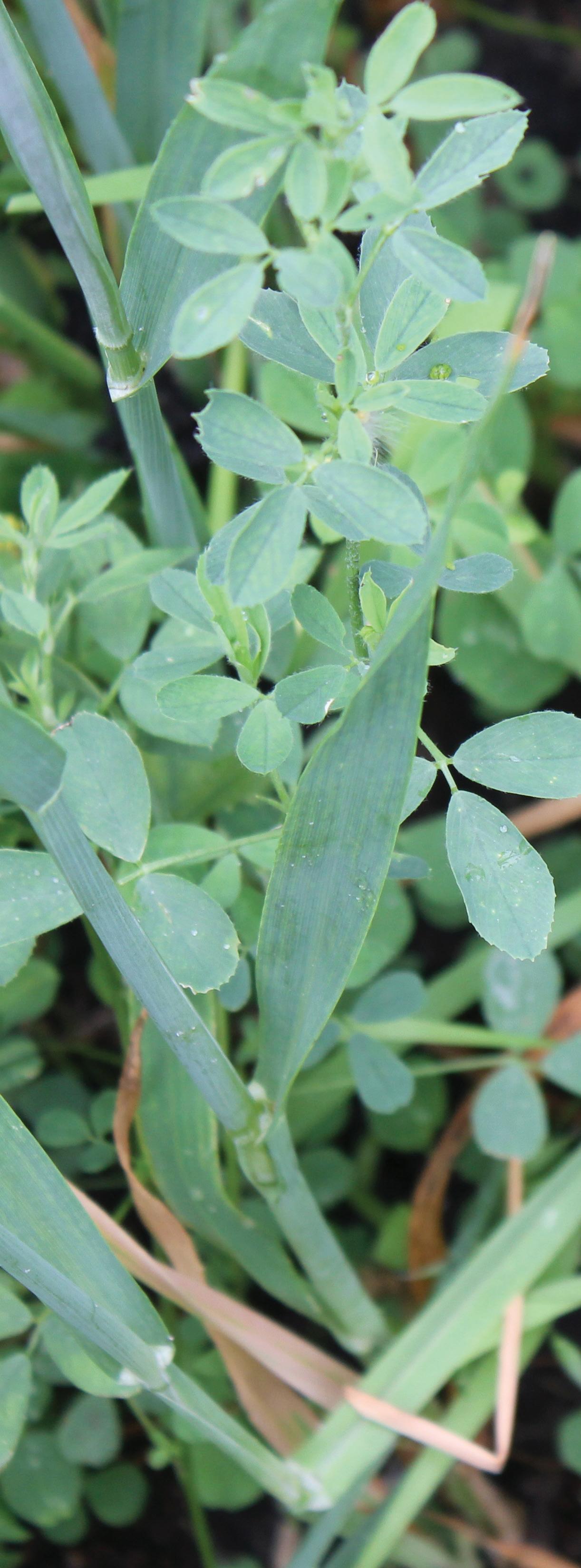
• Offers late summer potential for hay harvest
• Fits well into a corn, soybean, small grain rotation
This legume plow down mixture is composed of Nitrogen brand, non-dormant alfalfa, medium red clover and berseem clover. These cool-season legumes establish best under the cool, wet weather conditions of spring. Nitrogen Brand alfalfa has a fall dormancy of 9 and will winterkill in the Upper Midwest. This differs from standard, much hardier alfalfa, but makes the mix easier to terminate. Non-dormant alfalfa also keeps growing late into the fall, lessening its ability to survive winter, but adding more biomass to the system. Medium red clover included in the mix doesn’t dry down quickly for hay. The alfalfa and berseem clover added to the mix improve hay drying rate.
MANAGEMENT TIPS
• Don’t delay small grain harvest, as alfalfa and berseem will continue to grow into the plant canopy
• Terminate with burn down herbicide application in spring or fall, or organically with tillage
• Alfalfa and berseem will winterkill in the Upper Midwest, leaving just the red clover to terminate in the spring
• Not suited for frost seeding into winter wheat or rye; berseem clover not tolerant of early-season frosts
• Potential for cutting of hay and good regrowth for N fixation if under seeded with an early oat like Reins or Sumo
• Taking a cutting of hay reduces overall nitrogen credit for the following crop
9
EIGHT GREAT REASONS TO SEED GRASS WITH YOUR ALFALFA HAY
Most of the hay stands in the upper Midwest are seeded with only alfalfa. If you’re growing alfalfa hay, you may want to consider adding grass to your hay mix for greater diversity in plant species, insect communities, soil microbiological communities, and response to environmental conditions. There are at least eight great reasons to consider diversifying and seeding grass with your alfalfa hay:
1. Grass in the hay mix can improve the nutritional profile of the hay. Grass fiber in the vegetative stages is more highly digestible than that from alfalfa at comparable stages of growth.
2. Grass improves drying speed in the windrow (this tendency varies among grass species).
3. Grass as a percentage of the hay stand can improve hay yields.
4. Grass-alfalfa mixtures yield and survive better on soils with sub-optimal drainage. In fields with variable soil conditions, hay yields with grass in the stand can also be more consistent throughout the year.
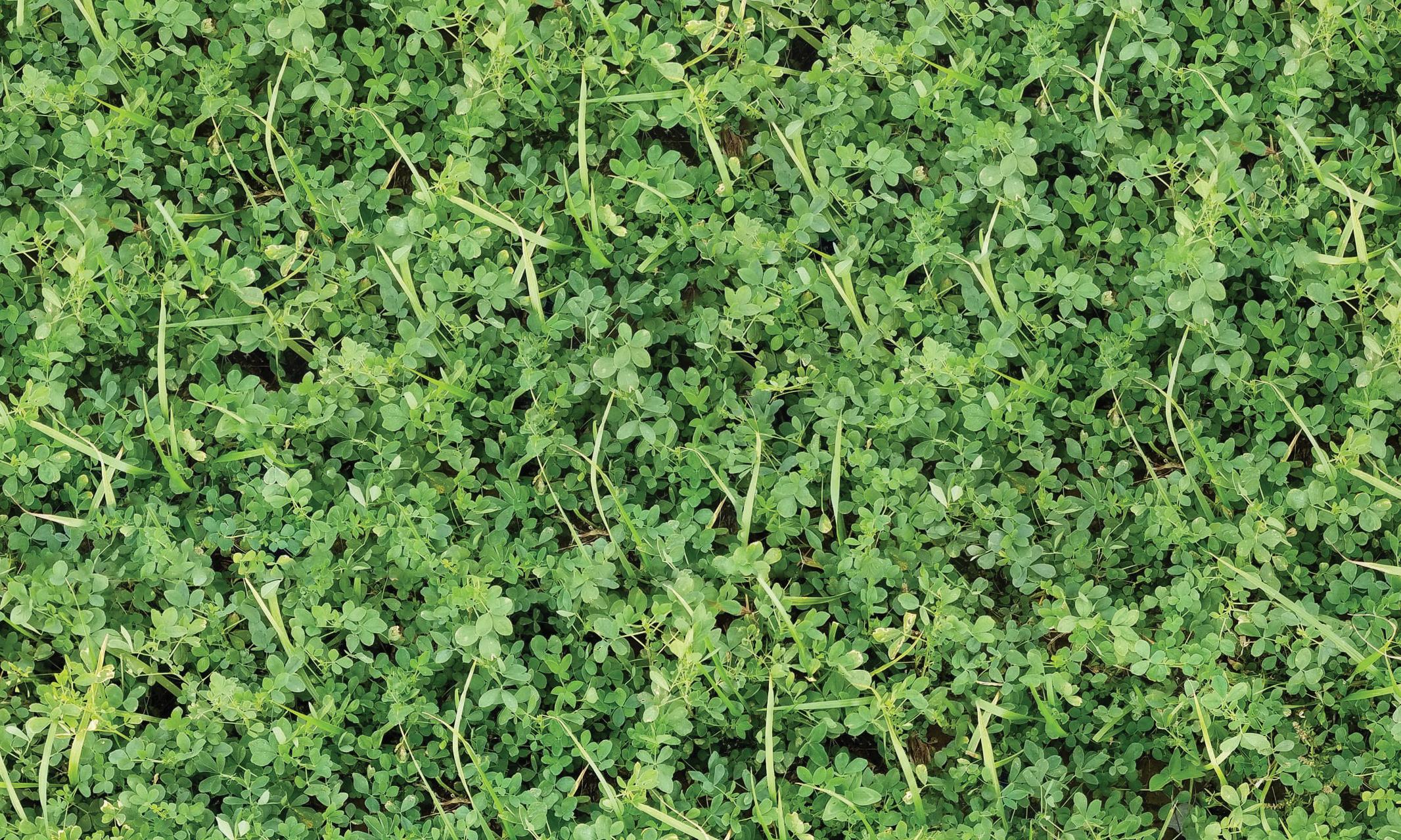
5. Grass helps maintain hay yields and quality as alfalfa plant populations decline with time.
6. Grass extends the life of the hay stand.
7. Mixed alfalfa and grass stands have lower populations of potato leafhoppers and alfalfa weevils compared to pure alfalfa stands.
8. Grass roots interspersed with alfalfa roots improve erosion control in sloping hayfields, particularly as stands age.
BEST GRASSES FOR HAY MIXES
The best grasses for alfalfa hay companions are meadow fescue, tall fescue (soft-leaved and endophytefree), and orchardgrass. For milking herds, meadow fescue, with the highest quality of these (in northern climates), is a great choice. For more diversity and higher grass yields in this mix, include some tall fescue or orchardgrass. For growing beef in the feedlot or dry cows, tall fescue and orchardgrass are excellent choices. Meadow bromegrass can be
MARGARET SMITH, PHD | FORAGE AGRONOMIST FOR ALBERT LEA SEED
10
a good addition to a diverse hay mix, particularly in hotter and drier areas; Alaska bromegrass can also add diversity and is extremely winter hardy.
Festulolium, perennial and Italian ryegrasses can also contribute high quality forage to a diverse hay mix but are less winterhardy, will not provide long term persistence, and are slower to dry than other species. They’re better suited for haylage or grazing systems.
Smooth bromegrass and timothy are not as productive as these other grass species. They contribute nicely to a first hay cutting but produce less than other grasses during the warmer, later summer months. In addition, they don’t survive well in more intensive three- or four-cut hay systems.
RATIOS OF GRASS TO ALFALFA
Hay from a stand with a ratio of 30-40% grass has the potential to match or surpass alfalfa yields from pure stands and to have higher feeding quality. We suggest seeding a 25:75 or 30:70 grass-alfalfa ratio, as the grass percent will increase with the age of the stand. Percent grass in the stand is also influenced by weather conditions at the time of seeding. Ample moisture following seeding will favor grass establishment, while dry conditions will favor the alfalfa.
Grass-alfalfa ratios can even change within a growing season. Research from Cornell University demonstrated that because cool-season grass growth peaks in the spring, the grass percentage in a mixed hay stand also changed within a growing season (with the percent grass highest at first cutting and less in subsequent cuttings).
This response to weather at seeding, the change in hay stand composition over time, and the differences in grass productivity within a growing season may well result in different grass to alfalfa ratios than planned for. This may seem frustrating but can contribute to overall resiliency of the forage supply on the farm.
MANAGING GRASSES IN THE HAY STAND
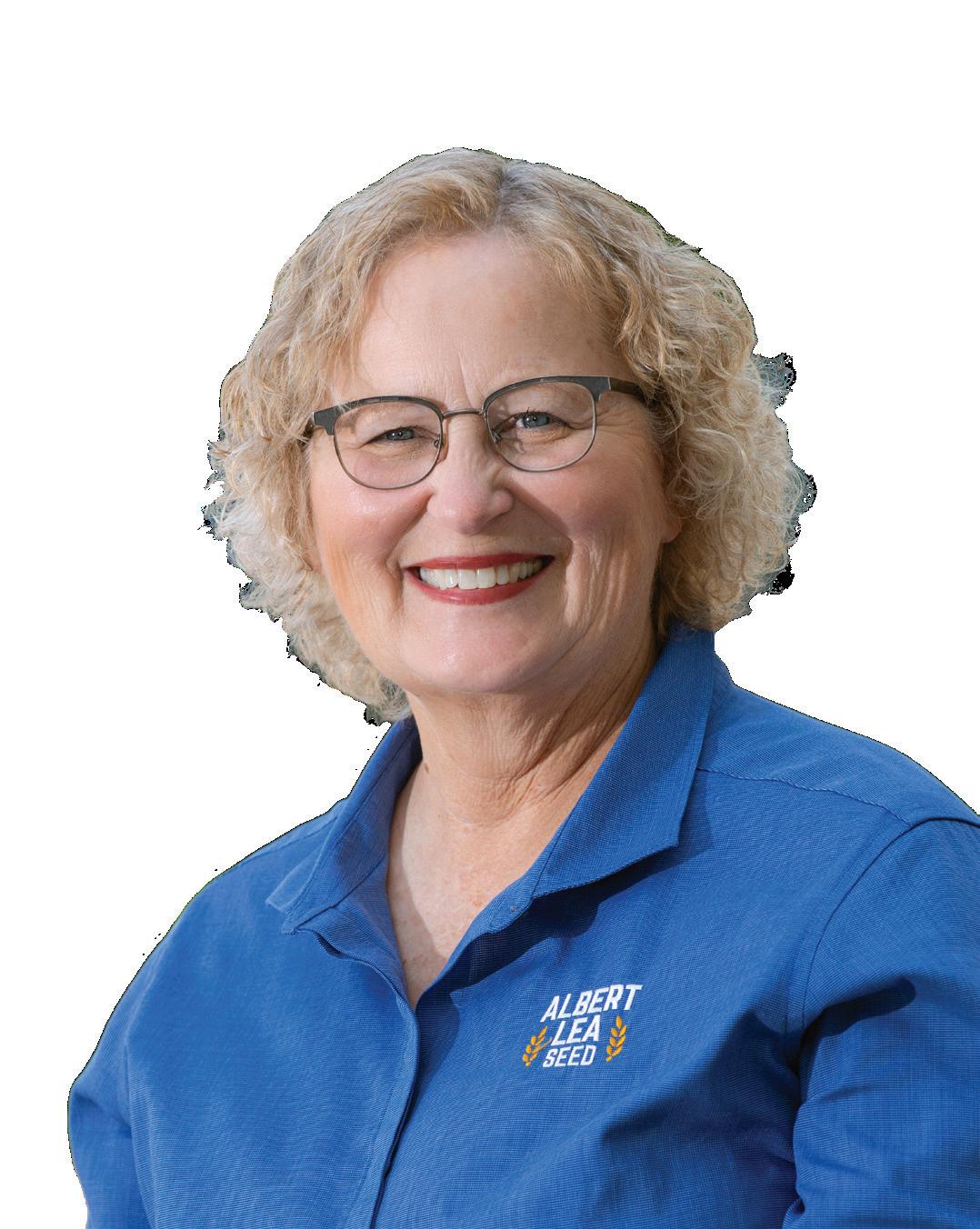
The composition of mixed grass-alfalfa hay stands will be more variable than straight alfalfa. Be prepared to evaluate the stand and adjust cutting schedules based on grass growth, especially for the first cutting, to avoid grass heading out before harvest. Base subsequent harvests on alfalfa growth
stage. For best coordination of grass heading and alfalfa flowering times in the spring, select grass varieties that are late maturing within their species.
Grass comprising 40% or less of a mix with alfalfa will get the nitrogen needed for growth from the companion alfalfa plants. When grass percentages climb above 40%, supplemental N may be needed to optimize yields.
For best regrowth and extended productivity, cut hay stands containing cool-season grasses at a 3.5” to 4” height, rather than the to 2” to 3” height recommended for pure alfalfa stands.
FEEDING MIXED ALFALFA-GRASS HAY
With the diversity and variability in mixed hay stands, it’s especially important to test each hay cutting for quality before including that hay in your livestock rations. Feed testing takes the guesswork out of ration formulation!
Don’t compare Relative Feed Value (RFV) of grass-hay mixes with straight alfalfa hay. RFV was developed for comparisons of pure alfalfa and isn’t a good measure of mixed hay’s feed value. Relative Forage Quality (RFQ) gives a more accurate estimate of a grass’s fiber digestibility and potential impact in the diet.
An expanded version of this article and additional resources on this topic are available at alseed.com/8reasons
11
WHAT’S INSIDE?
• Where we’ve been
• Where we’re going
• Meet National Sales Manager
• New underseeding option
• Seeding grass with alfalfa
WINNER
THE 2022 FORAGE SUPER BOWL!
“My neighbor planted 372HD four years ago and made 3-4 cuttings per summer. I was very impressed with the yield, quality and persistence in that field. He interseeded it with Green Spirit last spring to maximize the production in the final year.
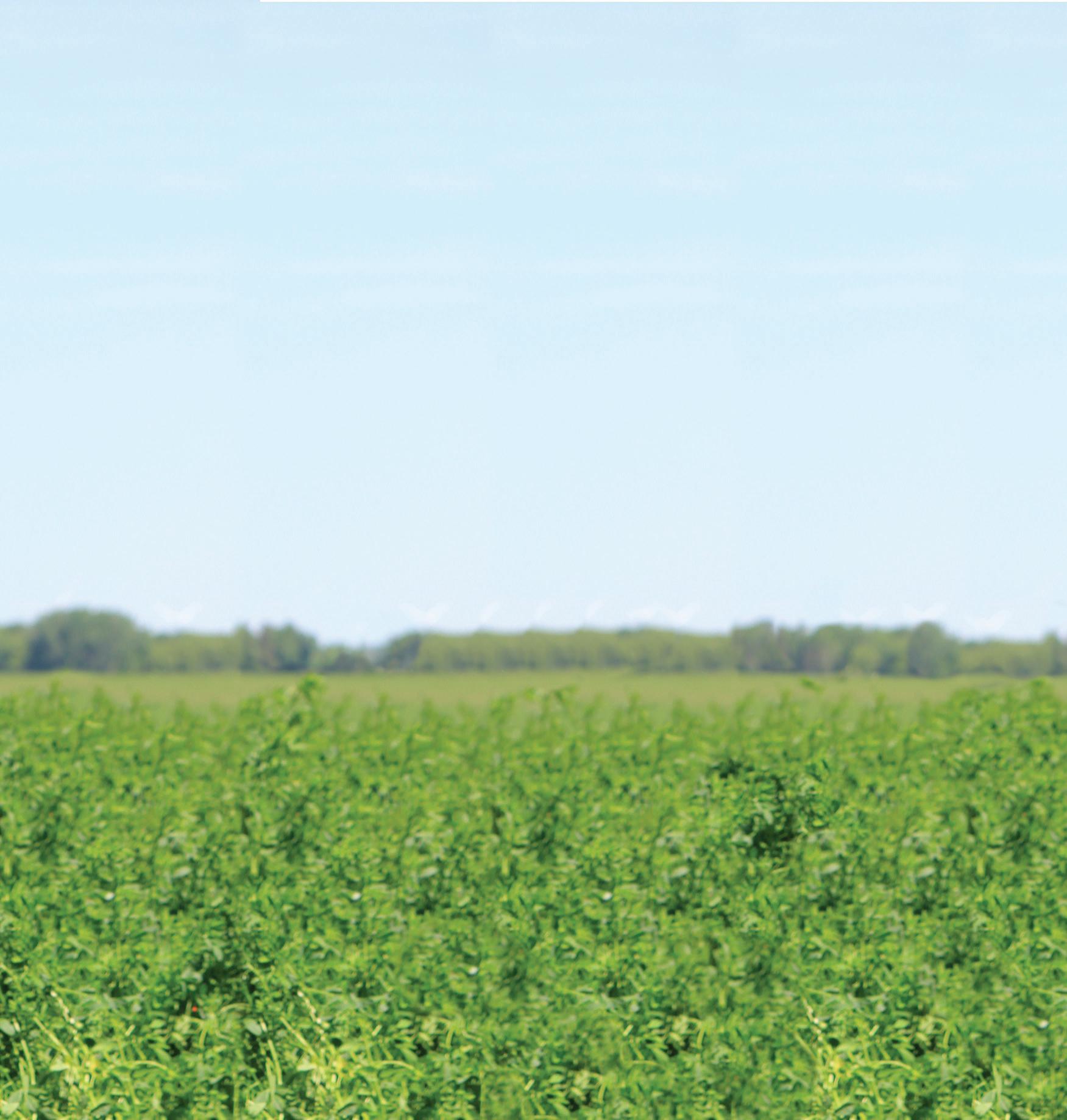

I bought some hay from him off that field this summer and entered it into the World Forage Analysis Superbowl. It won Grand Champion Dairy Hay for that category The quality was just excellent.”
– GROWER IN ROSE CREEK, MN –
1414 W Main St, Albert Lea, MN 56007 | 800.352.5247 | seedhouse@alseed.com | alseed.com SPECIAL EDITION – SPRING 2023 cultivator the 800.352.5247 | ALSEED.COM Viking 374HD is the next generation of 372HD, It also yielded 117% and 123% of check, respectively, in the 2020 and 2022 Cornell Forage Trials. For full product info and to see more impressive performance results for 374HD, visit alseed.com.
OF












 Salvador Telles, Oscar Adams, and Duane Citurs; seed plant workers
Dennis Whelan, George’s favorite handyman & builder
Tom Sheehan, Schoolteacher and part-time helper with Oscar Adams, long-time Seed Plant Manager
David Kluender, Farmer & (Bricelyn,Customer MN)
Gerald Stencel, Farmer & Customer (Waseca, MN)
Salvador Telles, Oscar Adams, and Duane Citurs; seed plant workers
Dennis Whelan, George’s favorite handyman & builder
Tom Sheehan, Schoolteacher and part-time helper with Oscar Adams, long-time Seed Plant Manager
David Kluender, Farmer & (Bricelyn,Customer MN)
Gerald Stencel, Farmer & Customer (Waseca, MN)





 Matt Leavitt, Organic Lead and Agronomist
Roger Elliott, Sales Agronomist
Kathleen English, Utility Infielder
Martin Broitzman, Farmer & Customer (Northwood, IA)
Michael Coughlin, Farmer & Customer (Blooming Prairie, MN)
Matt Leavitt, Organic Lead and Agronomist
Roger Elliott, Sales Agronomist
Kathleen English, Utility Infielder
Martin Broitzman, Farmer & Customer (Northwood, IA)
Michael Coughlin, Farmer & Customer (Blooming Prairie, MN)








